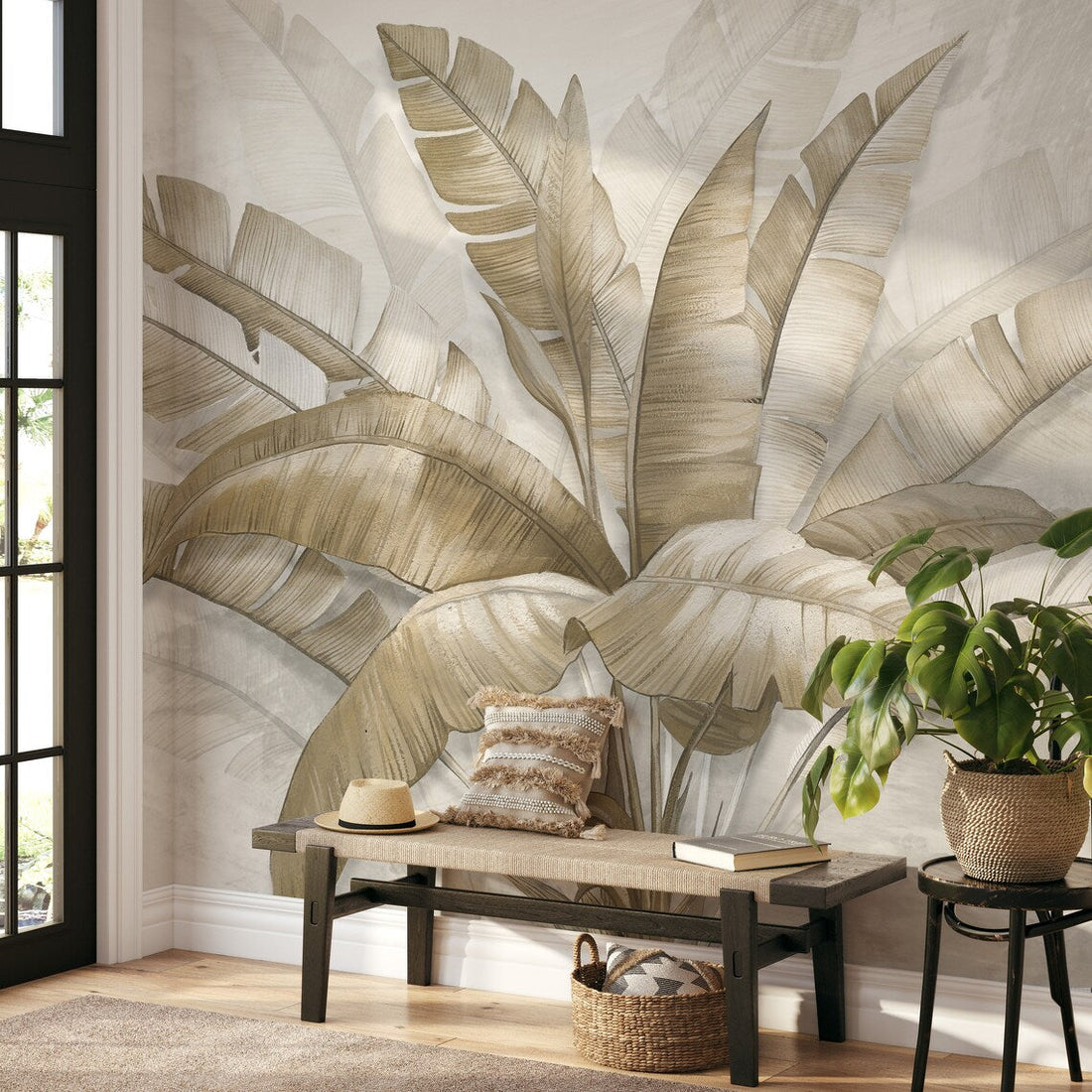
How to Harmonize Art and Bespoke Furnishing
Sai SandeepShare
Bespoke furnishing and art have long been celebrated for their ability to transform living spaces into personalized sanctuaries. When art is carefully integrated with custom-made furnishings, the result is a harmonious blend of visual storytelling and functional design. In this blog, we explore how to harmonize art and bespoke furnishing to create interiors that are both captivating and practical. For more details on our personalized art services, including custom wall murals, sculptures, and more, check out our Bespoke Art page.
The Role of Art in Interior Spaces
Art is much more than a decorative element—it is a powerful medium for expression and storytelling. In interior spaces, art serves several key functions:
-
Focal Point and Narrative: A well-chosen piece of art can become the centerpiece of a room, drawing the eye and setting the tone for the entire space. Whether it’s a large painting, a sculpture, or mixed media installation, art tells a story that reflects your personality and values.
-
Emotional Connection: Art has the unique ability to evoke emotions. A vibrant abstract painting might energize a room, while a serene landscape can create a calming atmosphere.
-
Versatility: Art comes in many forms and can be tailored to suit any style—from classic oil paintings to contemporary digital prints.
Example: Consider a living room that features a large, colorful painting above a bespoke fireplace. This artwork not only serves as a conversation starter but also infuses the space with energy, while the custom furnishings complement the colors and mood of the painting.
Understanding Bespoke Furnishing
Bespoke furnishing refers to custom-made furniture and decor that are specifically designed to meet the unique needs and tastes of the homeowner. Unlike mass-produced items, bespoke pieces are created with careful attention to detail, using high-quality materials and expert craftsmanship.
-
Customization: Every piece is tailored to fit the exact dimensions, style, and functional requirements of your space. This ensures that your furnishings are not only aesthetically pleasing but also perfectly suited to your lifestyle.
-
Craftsmanship: Skilled artisans bring a level of detail and quality that mass-produced furniture often lacks. The hand-finished touches and unique design elements make bespoke furnishings stand out.
-
Personal Expression: Custom furnishings allow you to incorporate your personal style into every aspect of your home, making the space truly yours.
Example: Imagine a dining room where the table, chairs, and even the sideboard have been custom-designed to reflect your love for vintage elegance. The furniture is built to exact specifications, ensuring that each piece fits perfectly within the room while adding character and charm.
Principles of Harmonizing Art with Bespoke Furnishing
Achieving a harmonious balance between art and bespoke furnishing involves several key principles:
Color Coordination and Palette Matching
The colors in your artwork and furnishings should complement each other. Harmonizing color palettes can create a unified look, even when using contrasting styles.
Example: If you have a bold, abstract painting with vibrant hues, choose bespoke furniture in neutral tones with subtle accents that echo the colors of the artwork. This creates a cohesive feel without overwhelming the space.
Scale and Proportion
The size of your art should be proportional to your furnishings and the overall space. A massive painting might dominate a small room, while a small piece can get lost in a large area.
Example: In a spacious living room with high ceilings, a large-scale sculpture paired with a substantial custom sofa and coffee table can anchor the space and create a balanced composition.
Style Consistency
Maintaining a consistent style between your art and bespoke furnishings is essential. Whether your aesthetic is modern, classic, or eclectic, ensure that both elements speak the same design language.
Example: In a modern minimalist apartment, select abstract or geometric art pieces that align with the sleek lines and clean forms of your custom-made furniture. The consistency in style reinforces a clear design vision.
Contrast and Balance
While consistency is key, a touch of contrast can add visual interest. Balancing bold art with more subdued furnishings (or vice versa) can create a dynamic yet harmonious space.
Example: Pair a dramatic, colorful mural with understated custom furniture in soft, neutral tones. The contrast draws attention to the artwork while the balanced furnishings keep the overall look grounded.
Strategies for Integrating Art and Bespoke Furnishing
Successful integration of art and bespoke furnishings involves thoughtful planning and creative placement. Here are some strategies to consider:
Creating a Focal Point
Let the art take center stage by designing the room around it. This could mean centering your layout around a statement piece of art.
Example: Use a large, eye-catching painting as the focal point of a dining area, and arrange custom dining furniture in a way that directs attention to the artwork.
Layering Elements
Layering multiple art pieces with your custom furnishings can add depth and dimension to a room. Combining different textures, shapes, and sizes creates a visually engaging environment.
Example: In a living room, hang a series of smaller art pieces arranged around a central sculpture, while custom-built shelving and a tailored sofa provide both function and form.
Custom Art-Inspired Furnishings
Sometimes, the best way to harmonize art and furnishing is to let the art inspire the custom pieces. Design furniture that echoes the patterns, colors, or themes found in your artwork.
Example: A coffee table with inlays that mimic the brushstrokes of an abstract painting can tie the room together, ensuring that both the art and the furniture are in dialogue with each other.
Thoughtful Placement
Where you place your art and furnishings can significantly impact the overall harmony of the space. Consider traffic flow, natural light, and the function of each area when arranging your pieces.
Example: Place a striking sculpture in a well-lit corner where it can be appreciated from multiple angles, and arrange custom seating to create an inviting conversation area around it.
Real-Life Examples and Case Studies
Real-life projects demonstrate the power of harmonizing art with bespoke furnishing. In one notable project, a client's living room was transformed by combining a large contemporary painting with custom-built furniture. The painting served as the centerpiece, while the bespoke sofa and coffee table were designed to complement its color scheme and style. The result was a space that was both visually stunning and deeply personal, earning praise from all who experienced it.
Another success story involved a bespoke dining room where a series of sculptural art pieces was integrated with a custom dining set. The art pieces were carefully curated to reflect the client's taste, and the custom furniture was designed to provide both comfort and a sense of grandeur. These case studies highlight how personalized decor can elevate any space and create a lasting impact.
Practical Tips for Homeowners and Designers
Achieving the perfect balance between art and bespoke furnishings requires collaboration and thoughtful planning. Here are some practical tips to consider:
-
Consultation and Collaboration: Work with interior decorators and art consultants who understand your vision. Their expertise will help align the art with your custom furnishings seamlessly.
-
Lighting Considerations: Proper lighting is essential to enhance both art and furniture. Use accent lighting to highlight artwork and ensure your custom pieces are well-illuminated.
-
Budget and Investment: While bespoke furnishings and art can be an investment, careful planning and prioritization can help manage costs. Consider investing in key pieces that offer long-term value.
-
Maintenance and Longevity: Choose materials and finishes that are durable and easy to maintain. Regular upkeep ensures that both your art and bespoke furnishings remain in pristine condition.
Future Trends in Harmonizing Art and Bespoke Furnishing
The integration of art and bespoke furnishing continues to evolve, influenced by new trends and timeless practices. Some emerging trends include:
-
Sustainable Customization: A growing focus on eco-friendly materials and sustainable practices is influencing both art and custom furniture. Expect to see more reclaimed and recycled materials used in high-end projects.
-
Fusion of Traditional and Modern: Designers are blending traditional craftsmanship with modern aesthetics to create spaces that honor heritage while embracing contemporary trends.
-
Personalization and Storytelling: There is an increasing emphasis on using art and custom furnishings to tell a personal story. This trend is all about creating spaces that reflect the history, culture, and personality of the homeowner.
Conclusion
Harmonizing art with bespoke furnishing is an art in itself. By understanding the role of art, recognizing the value of custom-made furniture, and applying key principles such as color coordination, scale, and style consistency, you can create interiors that are both beautiful and meaningful. The integration of art and bespoke furnishings not only elevates the aesthetic appeal of your home but also transforms it into a space that truly reflects your personality and lifestyle.
At Artvikta Studio, we are dedicated to helping you achieve this perfect balance. Our expertise in bespoke interior solutions ensures that every element in your space works in harmony to create a truly personalized environment. Explore our services today and take the first step toward transforming your home into a masterpiece of art and custom decor.
Embrace the art of harmonization, and let your space tell your unique story.
